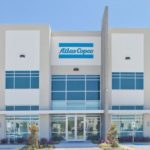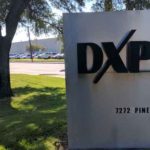For more than a decade, I’ve been working with distributors of all sizes and all profit levels in many different industries. We noticed a cadre of companies with profit rates far above those of their peers, and started looking for the common attributes that were driving rates of 15%, 20%, and even 25%.
We found these six attributes were the common markers of the high-profit companies:
- core competency: moving product
- absolute minimum of inventory locations
- mastery of delivery alternatives
- focus on customer experience
- specialized sales force
- numbers-driven
1. Core Competence: Moving Product
The top companies are really, really good at moving product. That is, they move more product value for less expense than their peers.
This has been achieved through a relentless focus on efficiency and productivity in their operations. Implementing incentive-driving efficiency measures like OpCash Ratios and ROX metrics, and supporting productivity metrics at each stage of your logistics chain will result in continuously-improving efficiency that increases this kind of competence.
OpCash ratios and ROX metrics are used to quantify efficiencies at each step of the internal logistics chain (sales, order entry, assembly, warehouse, delivery, administration, etc.) at each location. They’re used both to determine improvements over time, and comparisons between locations to support incentives and personnel choices.
Efficiency measures can’t be directly controlled, but productivity measures that influence them can. For this reason, you’ll want to train managers on the creation and use of productivity measures, and provide the support needed for these vital tools.
2. Absolute Minimum of Inventory Locations
Every location that holds inventory increases the quantity and value of duplicated stock, and also duplicates the personnel needed to handle it. Top companies have one single distribution center, and substitute the most modern and creative delivery processes for proximity, providing on-time delivery matched to customer needs.
Most companies have grown by duplicating existing locations into new geographies, and have done little rationalization. This makes them vulnerable to competitors that are a step beyond, because they can’t meet the price advantage available from comparatively lower handling costs so their profits erode over time.
Optimizing product handling everywhere it’s done drives up OpCash ratios and ROX. Warehouse organization and zone picking have big impacts. Certain systems improvements, and even rudimentary automation can change these numbers significantly.
Where volume and pick frequency warrant it, flooring inventory at a customer location can provide a ROX gain. Although it goes against the stated objective, having customers pick their own inventory from a stock you replenish can be a game-changer for some accounts.
3.Mastery of Delivery Alternatives
The top companies have exploited new and emerging delivery options, and have mostly shifted from their own fleets to third parties.
Most companies already offer a de facto range of delivery options. They’ll send an emergency truck, or have a sales rep deliver the order. However, these are profit-eating exceptions that disrupt the orderly flow of business, and cause a cascade of other expensive exceptions that magnify losses. (Nobody can find paperwork from a sales rep delivery, so the customer won’t pay.)
Top players have formalized the range of delivery options so time-scales can be chosen by the customer to meet the individual needs of each order. The customer can get more-expensive same-day or next-day where it matters, near-premium delivery in a couple of days, or batched next-week delivery where lowest cost is desired. The company gets a serious reduction in screw-ups and expensive corrections.
Formalizing an expanded set of delivery options gives you a competitive advantage, facilitates increase in delivery revenue, reduces expenses, and shifts more of your expense base into a variable cost that scales with your needs, and nearly eliminates profit-eating exceptions.
4. Focus on Customer Experience
The most descriptive term I’ve heard that sums up the customer perspective on your relationship is “customer experience.”
What’s it like to do business with your company? Really.
For a super-performing company, the experience is smooth and trouble-free, and the causal relationship driving that results isn’t what you’d first expect.
The relentless focus on efficiency and productivity (plus the organizational elements that support them) means that customers get their product faster, with fewer errors, and probably at the best price. High efficiency means profit rates that fund specialized expertise, concierge customer service, and customer programs designed to make the customers more successful.
The customer experience delivered by the best companies isn’t based on donuts and small-talk, rather it’s doing everything they can to make customers more successful. They’re focused on delivering the things customer want, and are efficient enough to provide price advantages other companies can’t.
5. Specialized Sales Force
It’s not fair to say that our sales force organization is out of the Dark Ages. It’s not even as good as that. At least in the dark ages, people had begun to specialize to do specific tasks.
Yet in sales we routinely expect reps to generate leads, prospect for new accounts, set appointments, conduct sales calls, provide follow-up service, and even do collections. Nobody, and I mean nobody, is good at all of these things; resulting in our reps doing a bad job of some of the critical things in their sales process.
Top companies have recognized these deficiencies, and are now creating specialized sales organizations. Salaried specialists do lead generation, prospecting and appointment setting. A very small high-powered sales team makes calls, almost solely dedicated to winning accounts, and then a concierge team does account maintenance, while collections specialists work receivables.
This delivers consistent and effective action into the sales preparation phase, assigns the most persuasive and capable reps to presentation and the actual selling, and puts a team the customers love in charge of keeping them happy.
It also reduces costs in one of the costliest areas of the company.
6. Numbers-Driven
Increases in market share are very difficult to obtain unless a rise in customer loyalty is driven by improvements in customer experience. Customer experience improves when the company raises its level of operational efficiency. The product gets to where it needs to be, on time, and with no errors.
Performance gains are most accessible with uniform and consistent measures that reflect both the opportunity, and the actual performance, in each area of the company. (That means using both OpCash ratios and ROX metrics.)
Significant efficiency gains are driven by using productivity metrics to manage the contributory activities and resources throughout the organization. Widespread use of these measures will have most people actively working on improvements in each of their own areas. Sustainability of the improvements comes from making the new practices habitual.
For all measures you’ll use them to compare performance between similar operations (branches), and also see how they change over time.
What’s the Take-Away?
These six attributes drive superior cash-flow, profit rates and market share. With very few exceptions, the attributes are available to every company – including yours.
Implementing the OpCash ratios and ROX metrics throughout the company, supported by the productivity measures that drive and support them, will immediately put you on track for market leadership.
Gather your team, and get to work on these six items to begin your advance to new records in cash-flow, profits and market share.
This article is adapted from a section in Profit-Driven Analysis & Practices: The CEO’s Guide to Record Profits by Randy MacLean. The book explains the field of LIPA (Line-Item Profit Analytics), and how you can use its unique metrics and strategies to out-perform everyone else in cash-flow, profits, and market share.
 Randy MacLean is the founder of WayPoint Analytics, the inventor of LIPA, and best-selling author of a series of profit practices books. For more than a decade he’s been analyzing company results, thinking about, writing about and advising on profit issues in distribution and manufacturing. WayPoint software is used by hundreds of companies to control their profits and their destinies. Reach him at rmaclean@waypointanalytics.com.
Randy MacLean is the founder of WayPoint Analytics, the inventor of LIPA, and best-selling author of a series of profit practices books. For more than a decade he’s been analyzing company results, thinking about, writing about and advising on profit issues in distribution and manufacturing. WayPoint software is used by hundreds of companies to control their profits and their destinies. Reach him at rmaclean@waypointanalytics.com.
Related Posts
-
These small additions to the Swedish manufacturer will become part of the service division within…
-
DXP expand portfolio with the strategic acquisitions of Total Equipment Co., APO Pumps & Compressors…
-
Texas-based building materials distributor SRS expands footprint with acquisitions of two family-owned companies in Washington…






